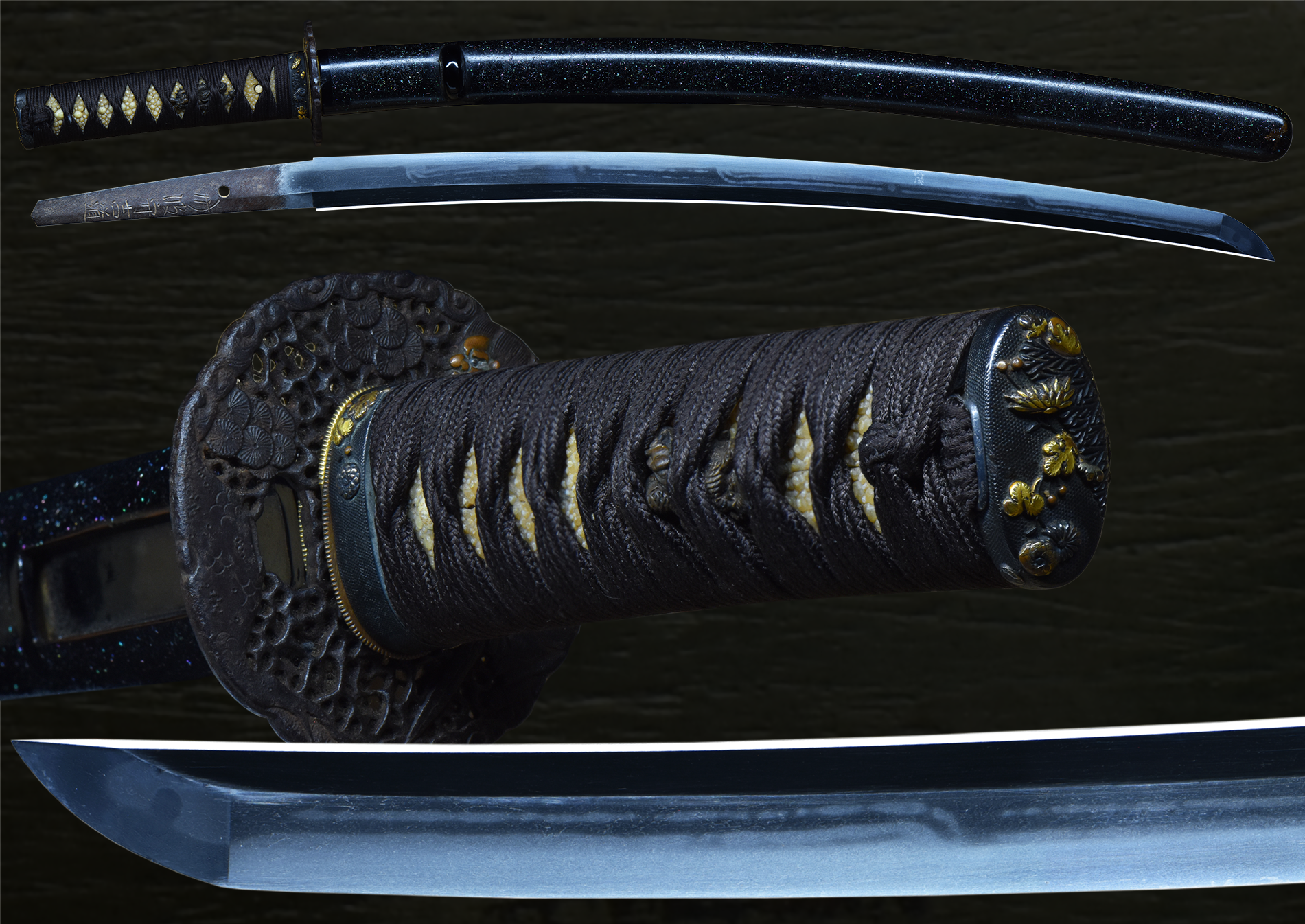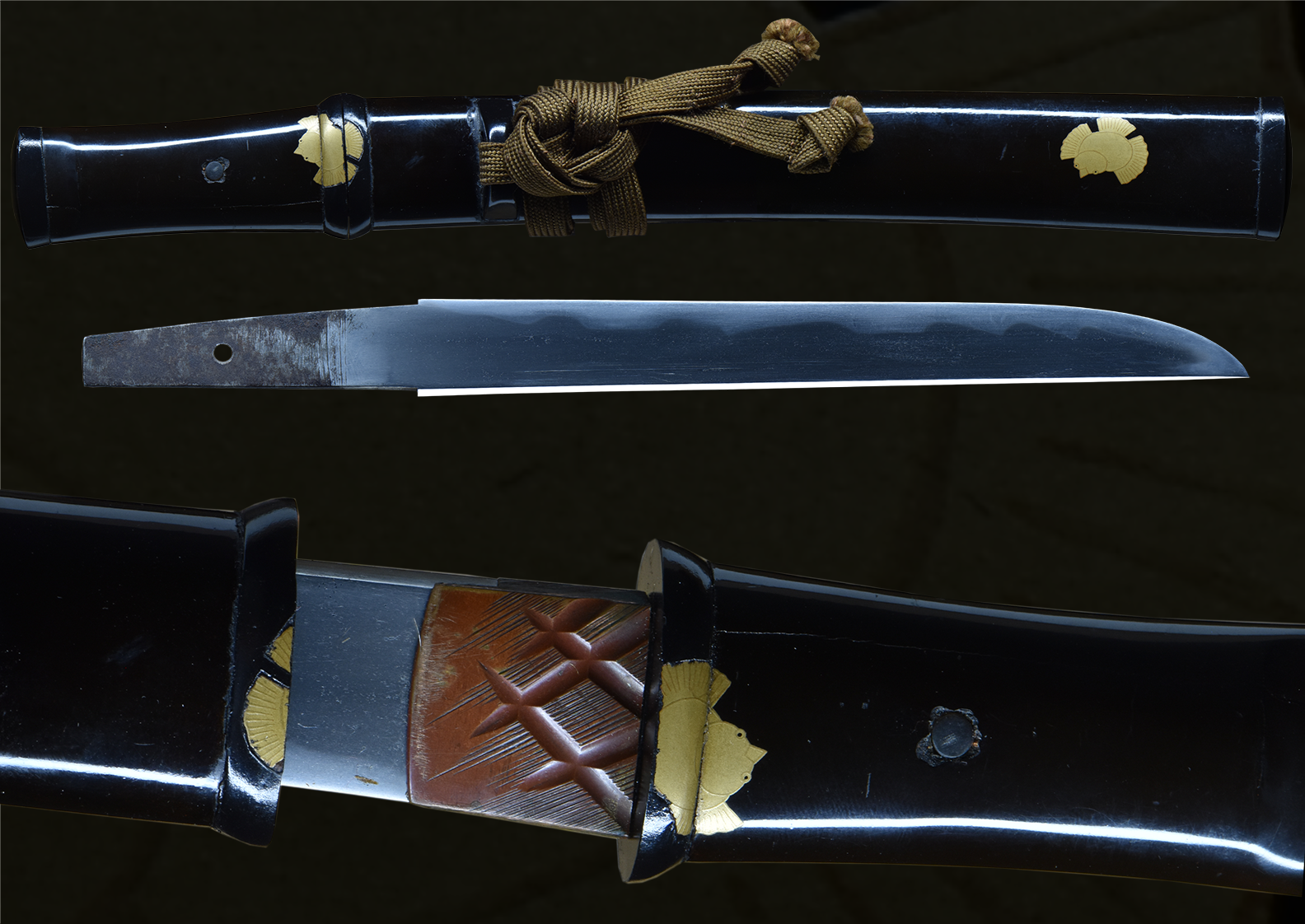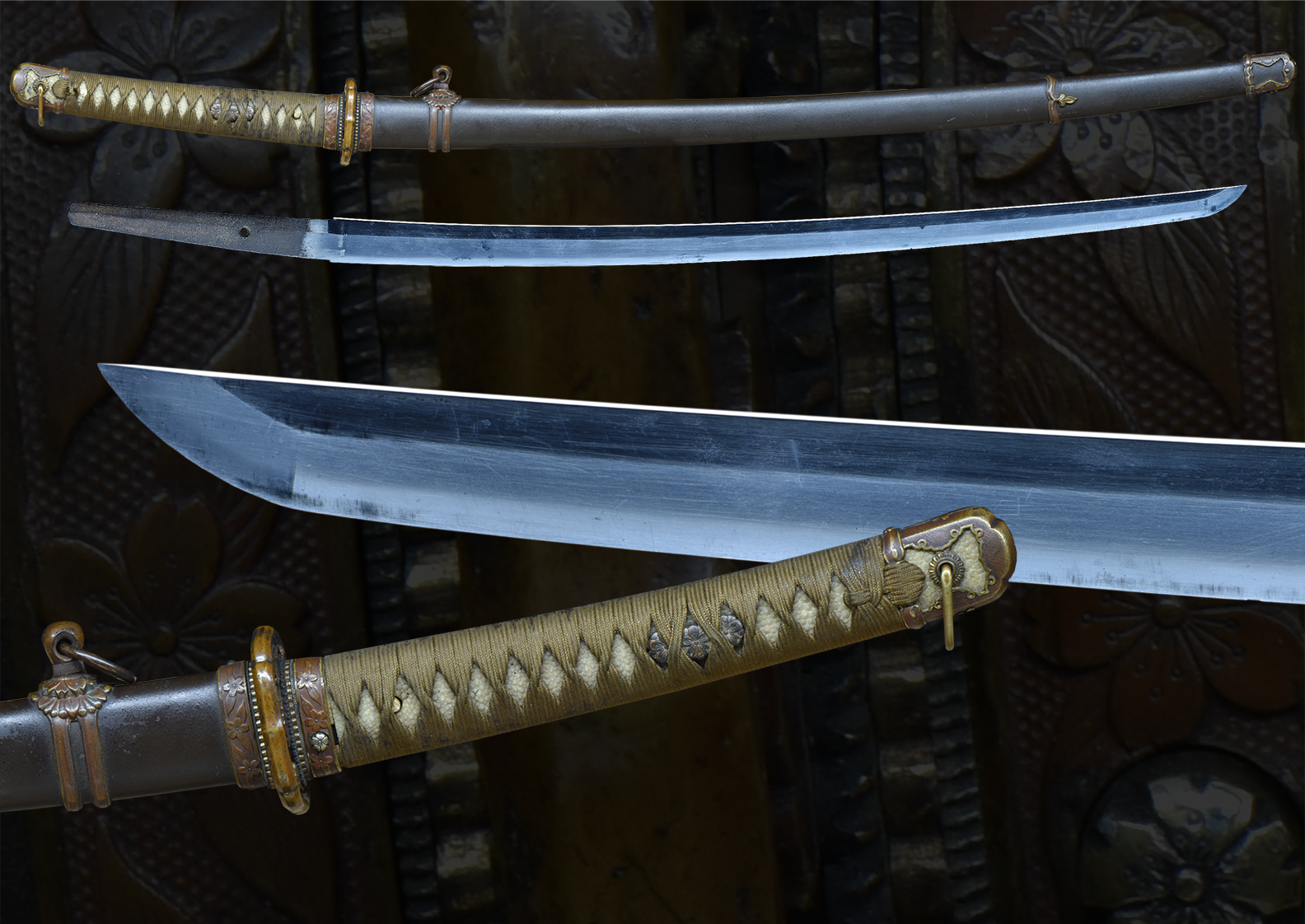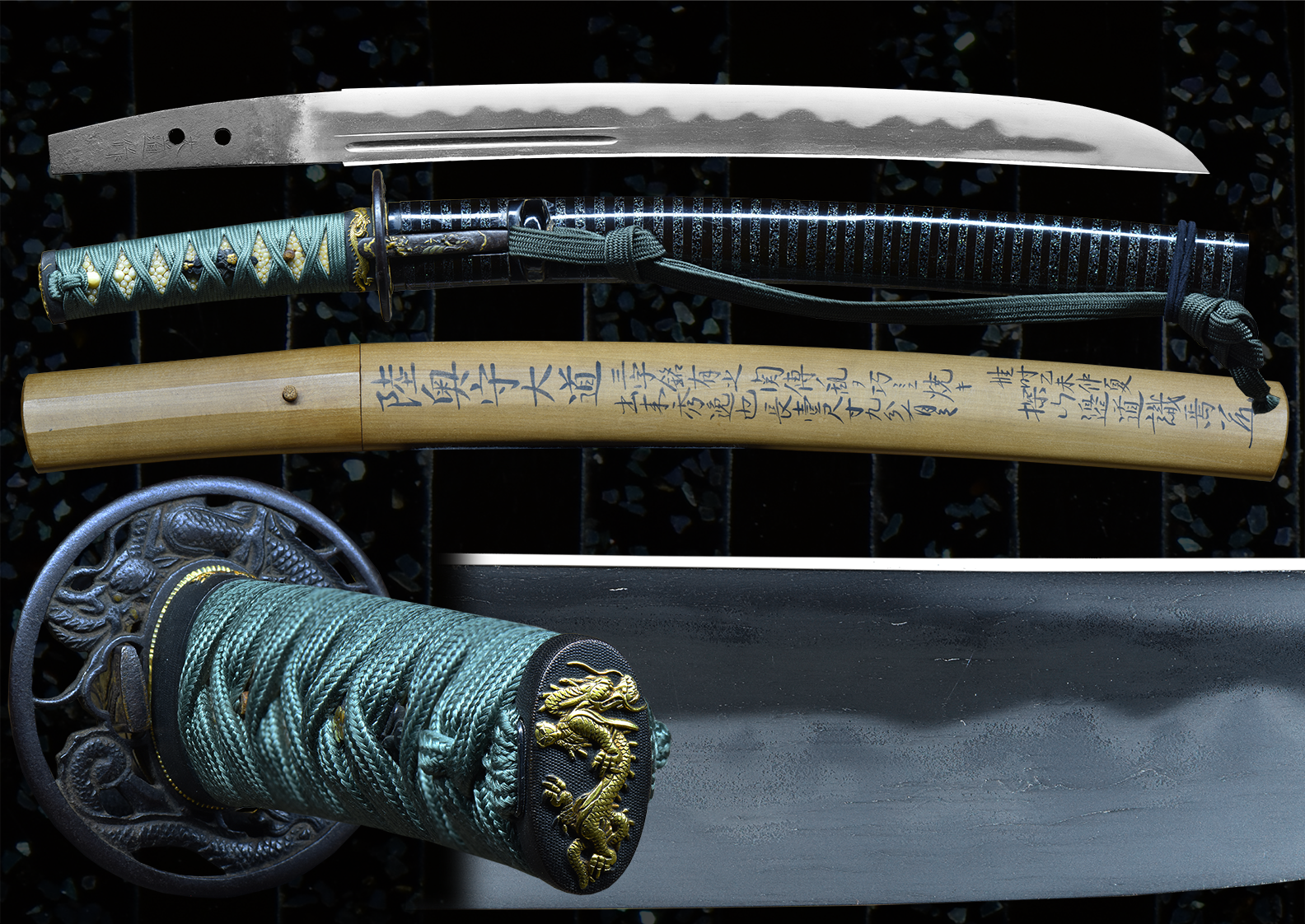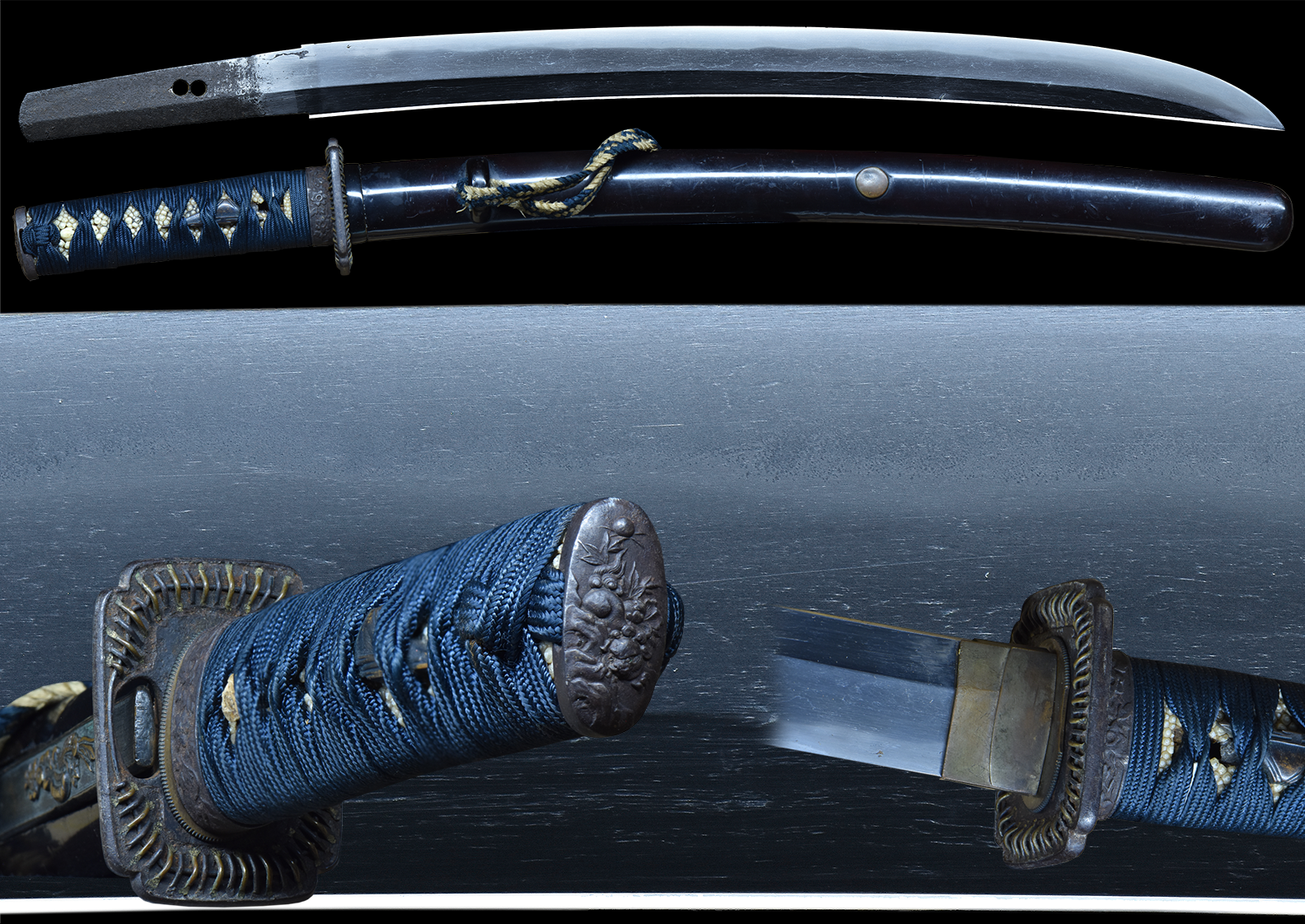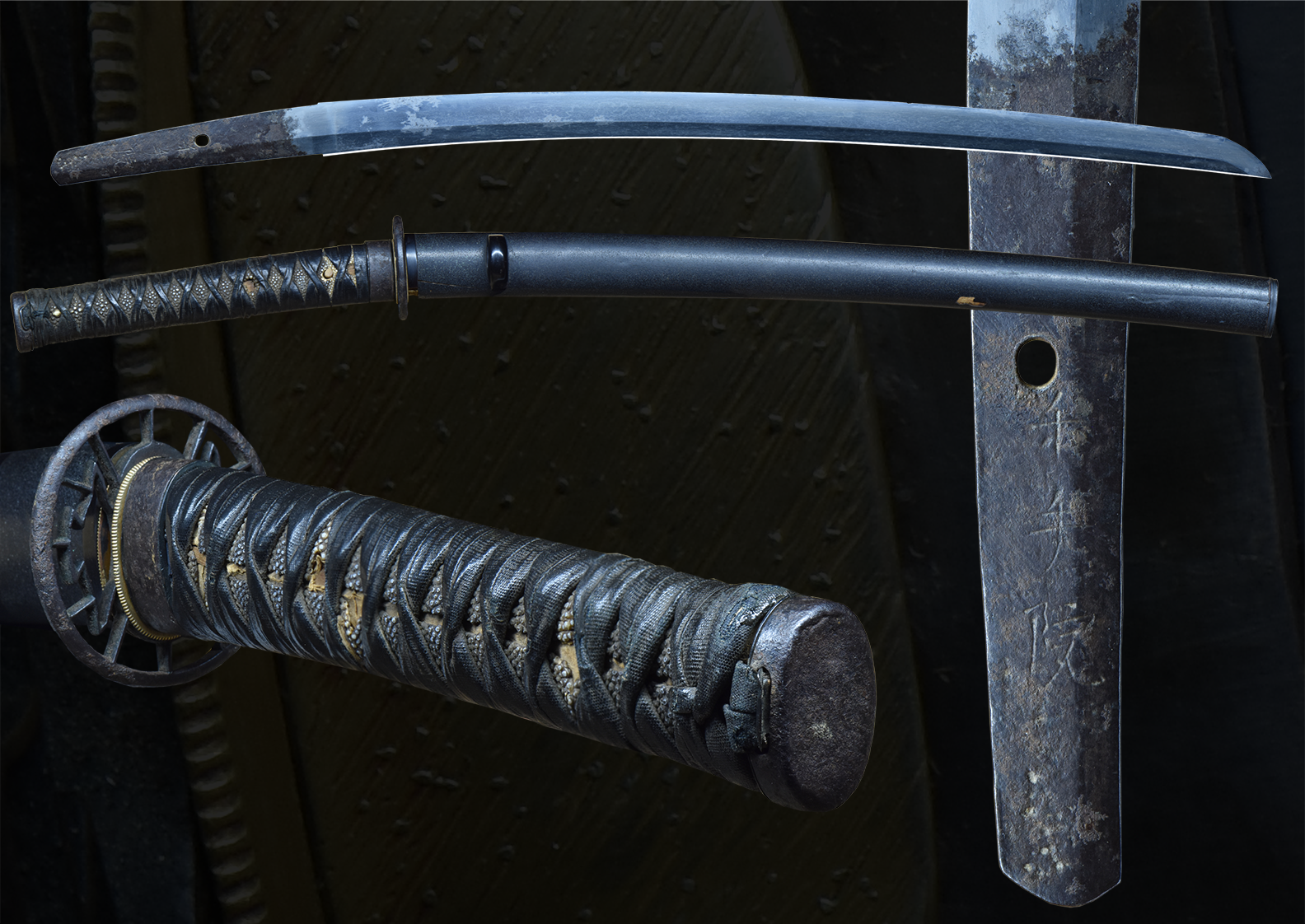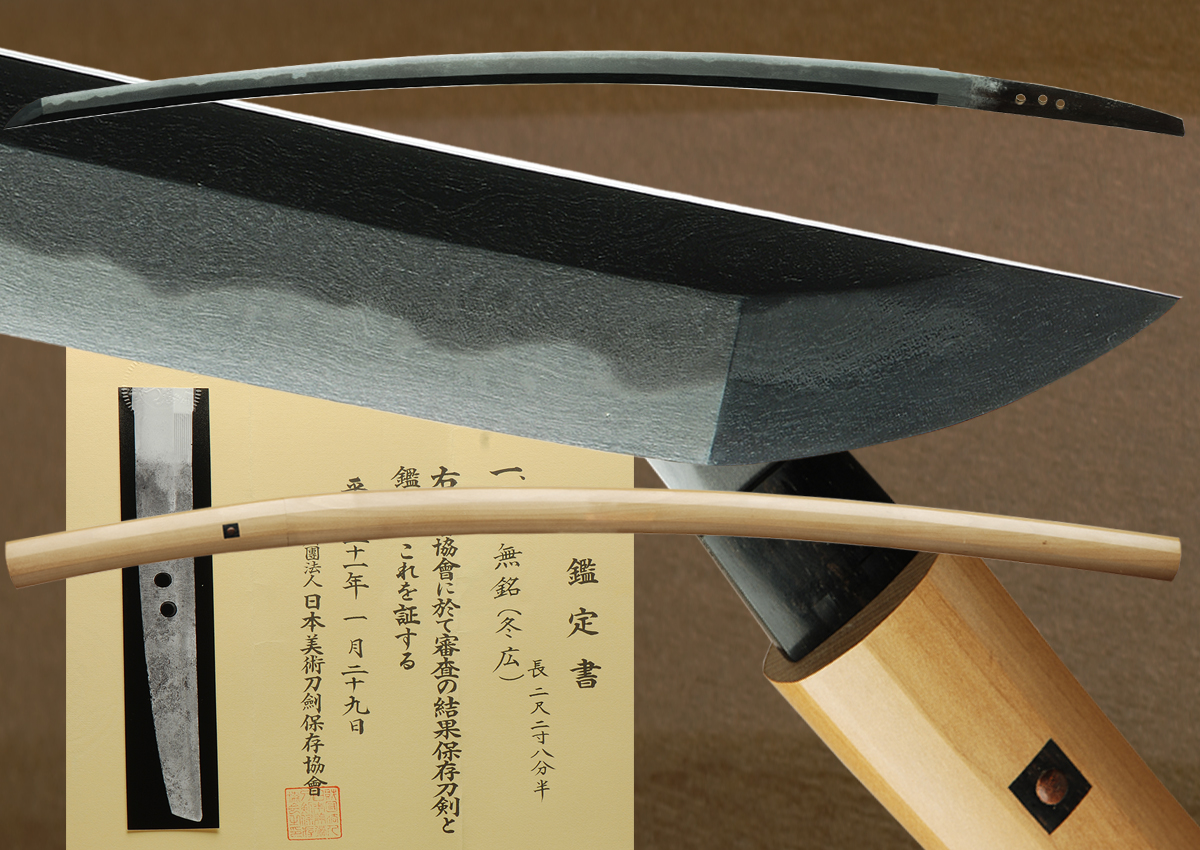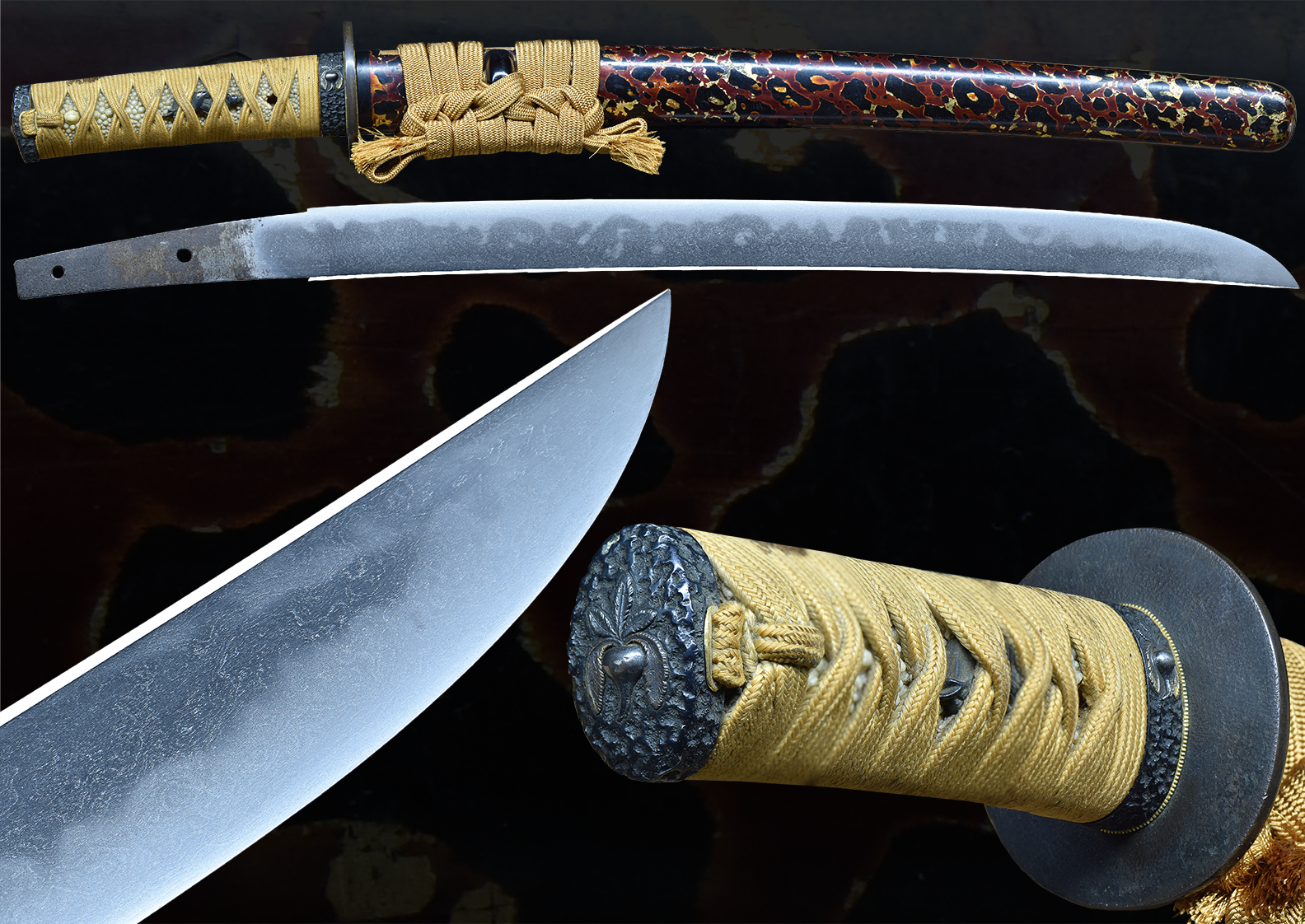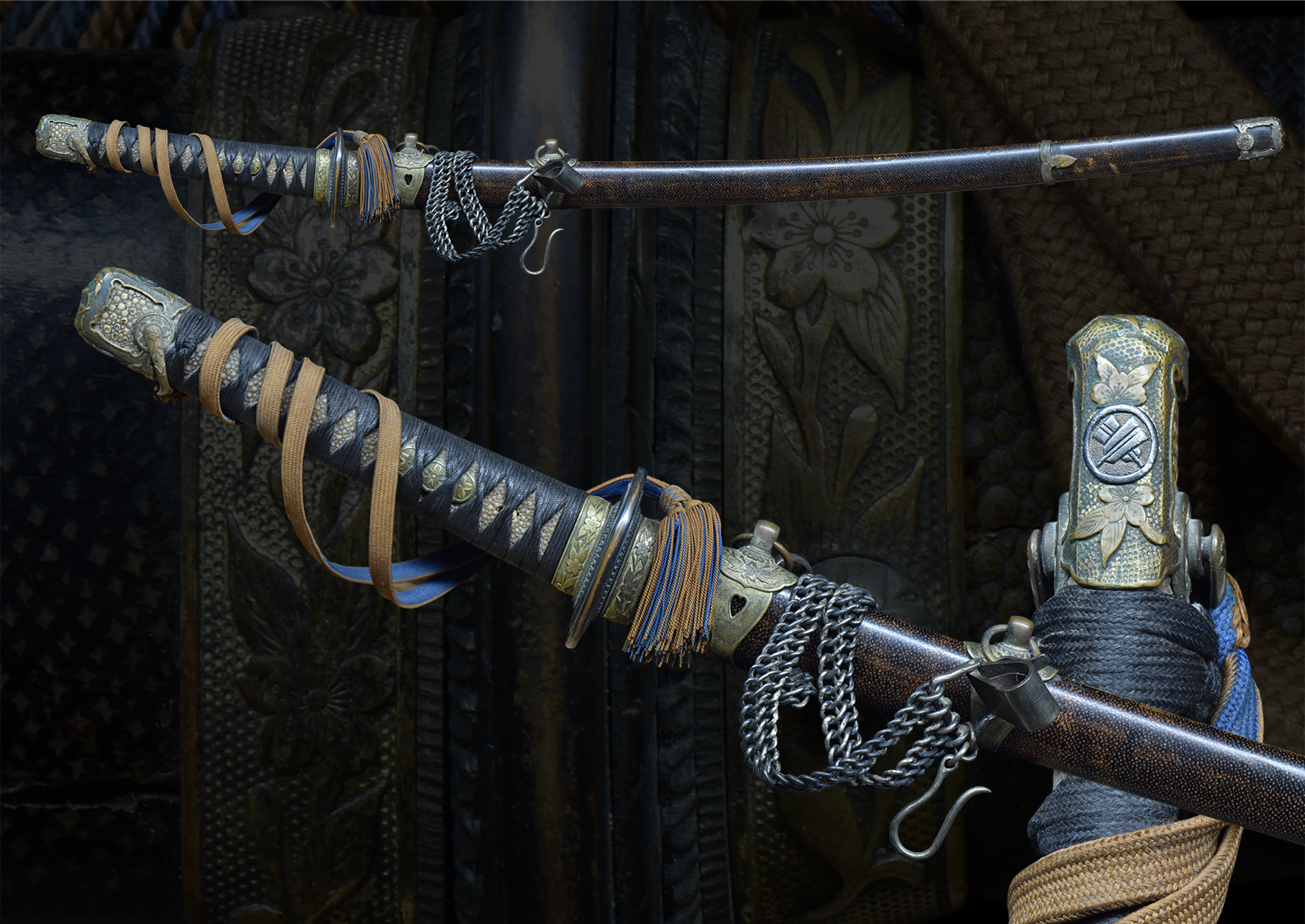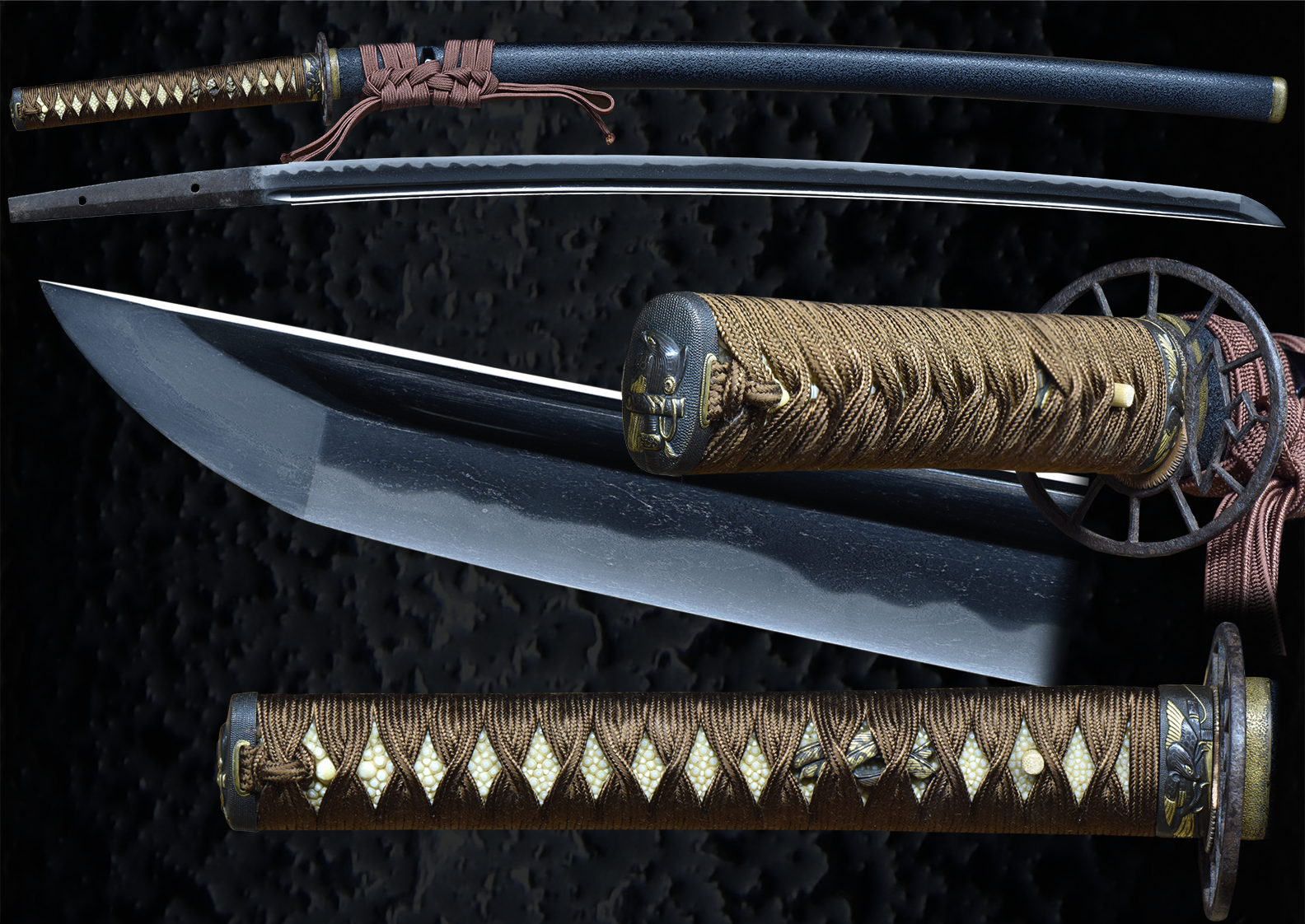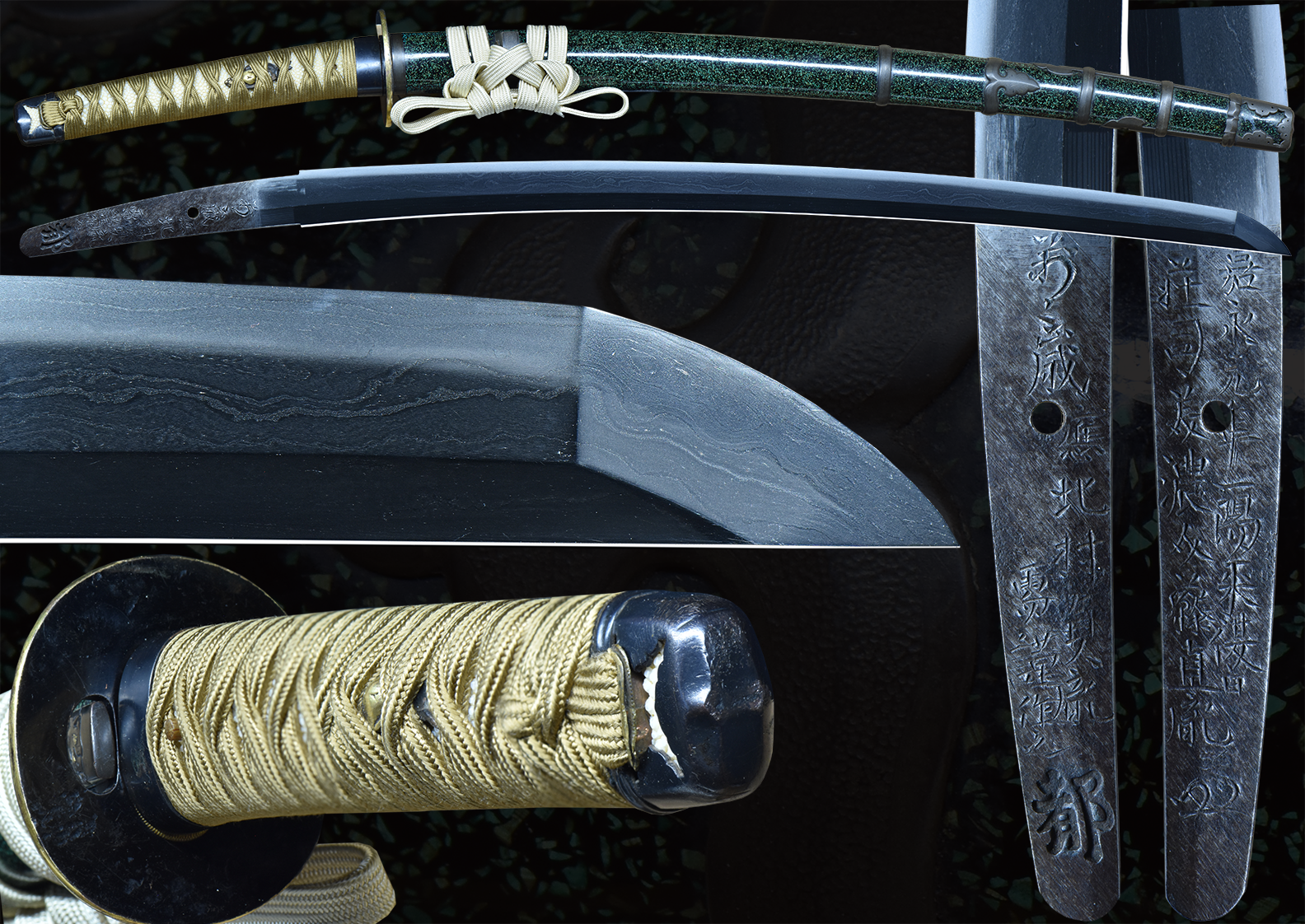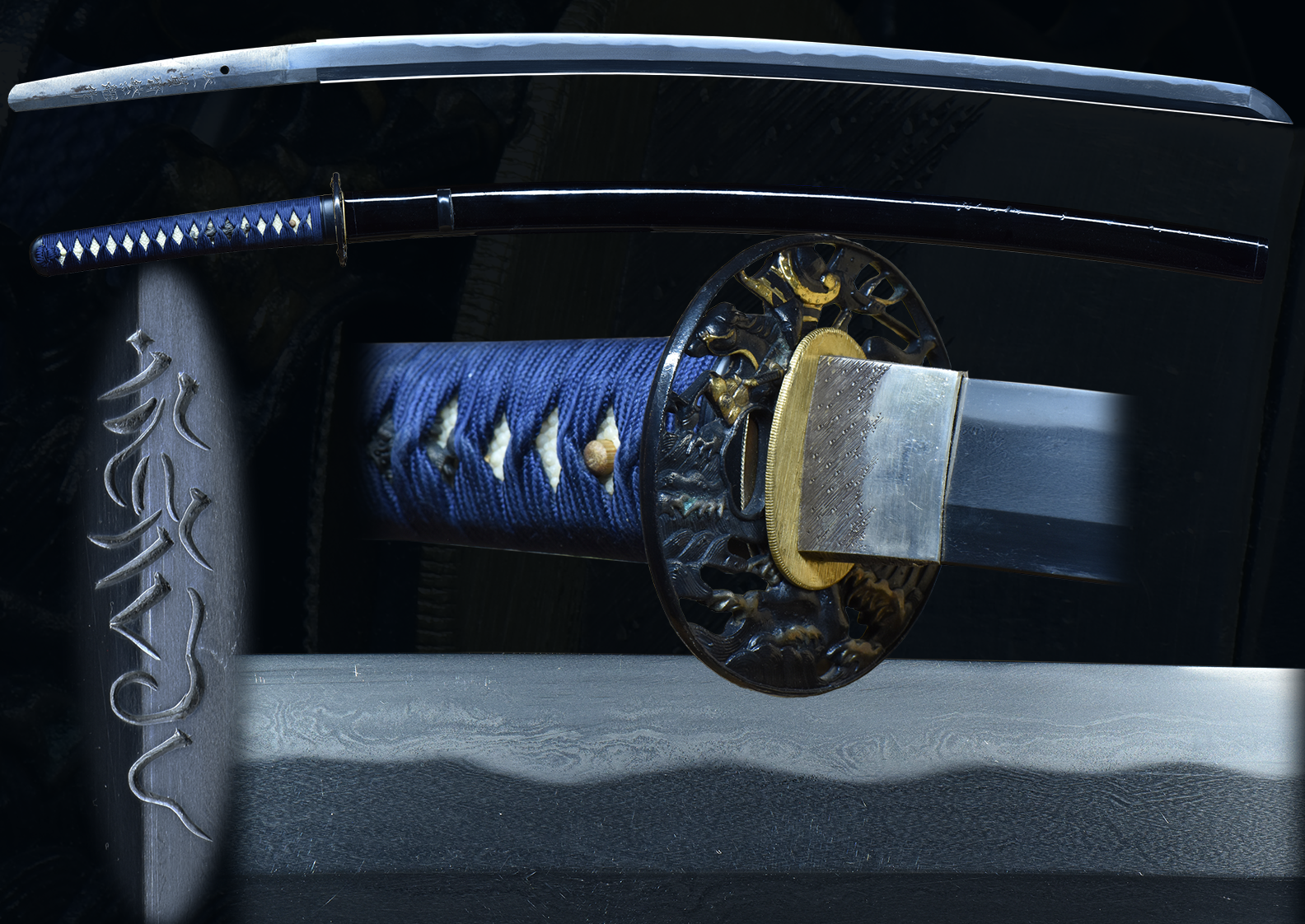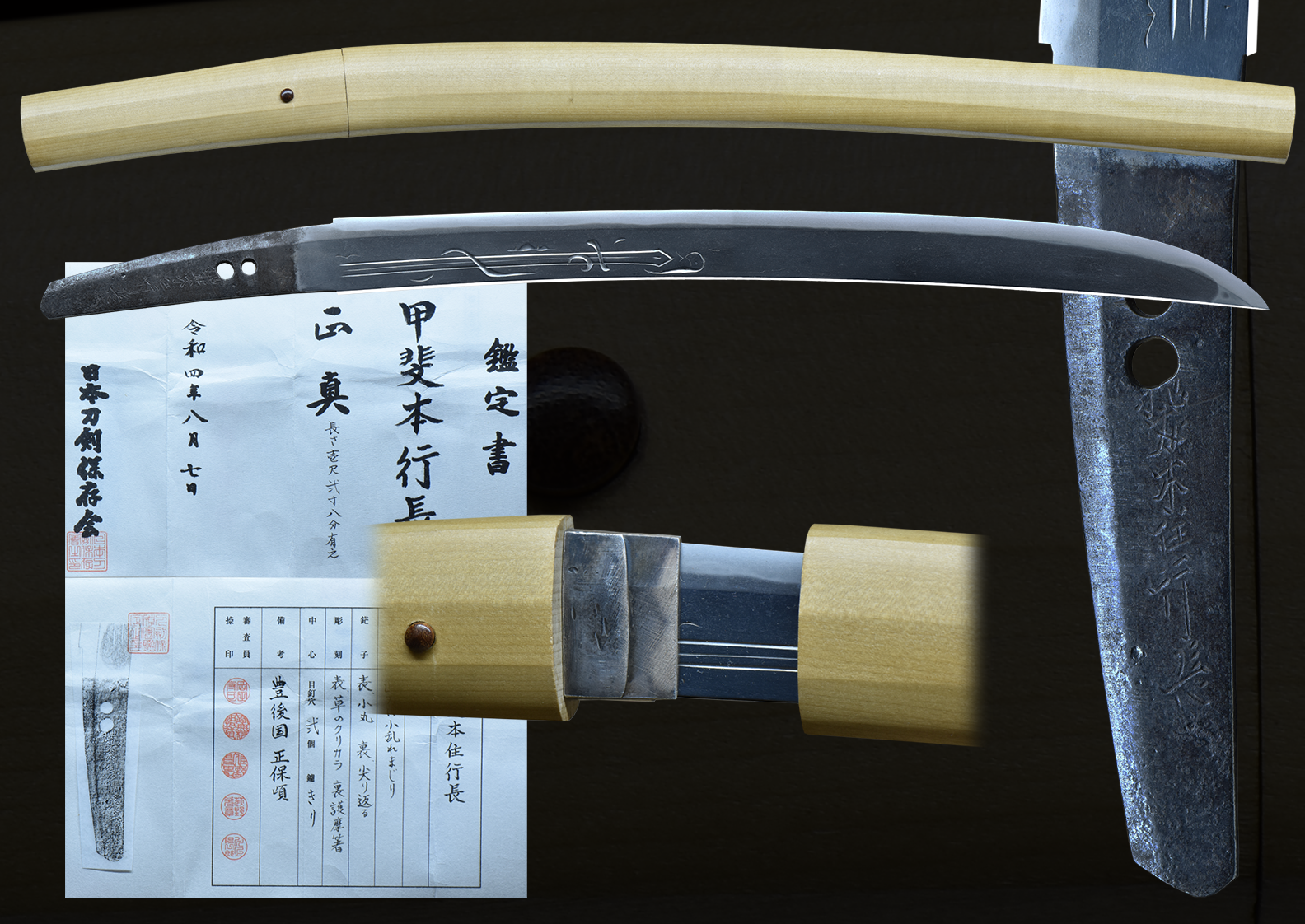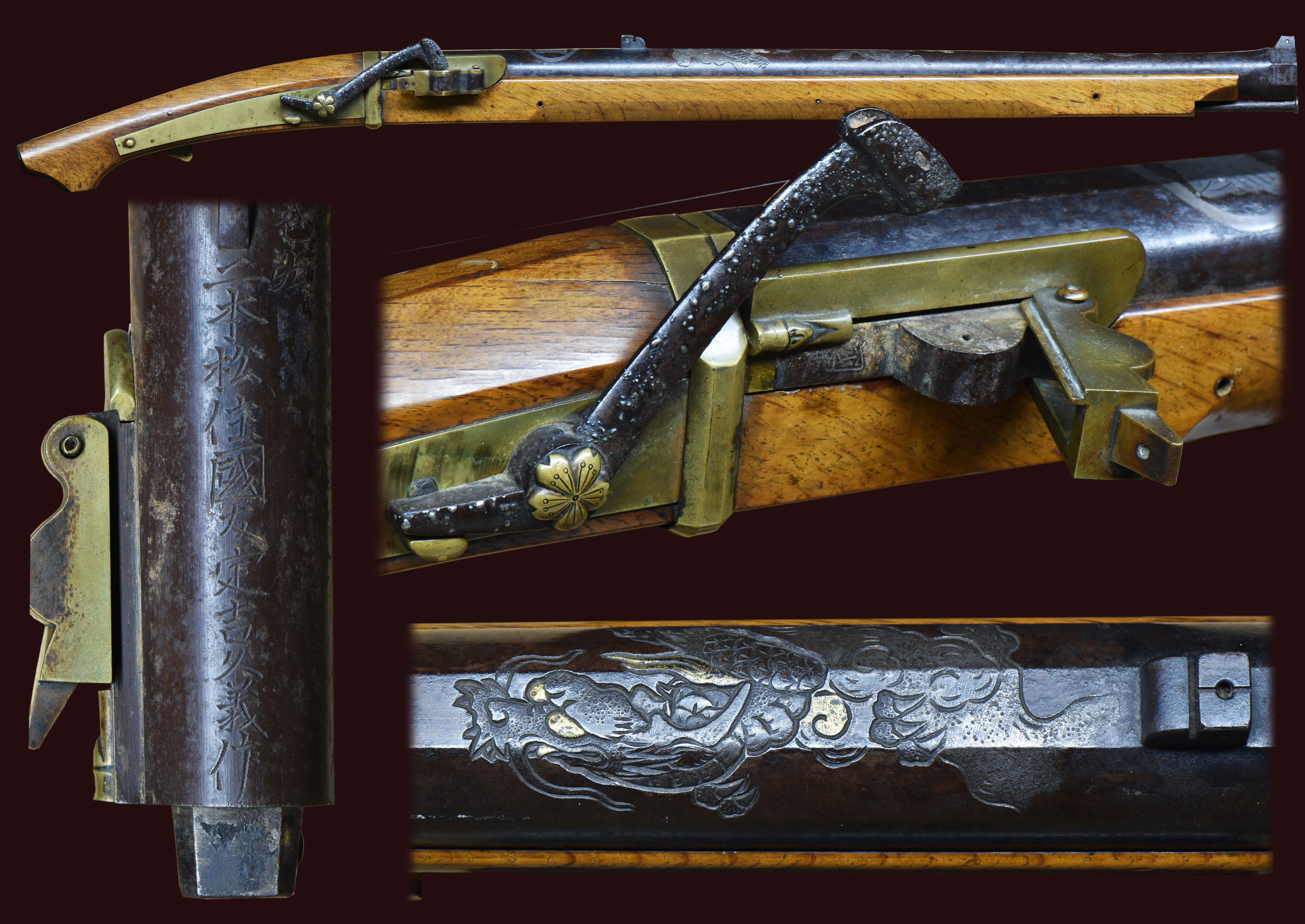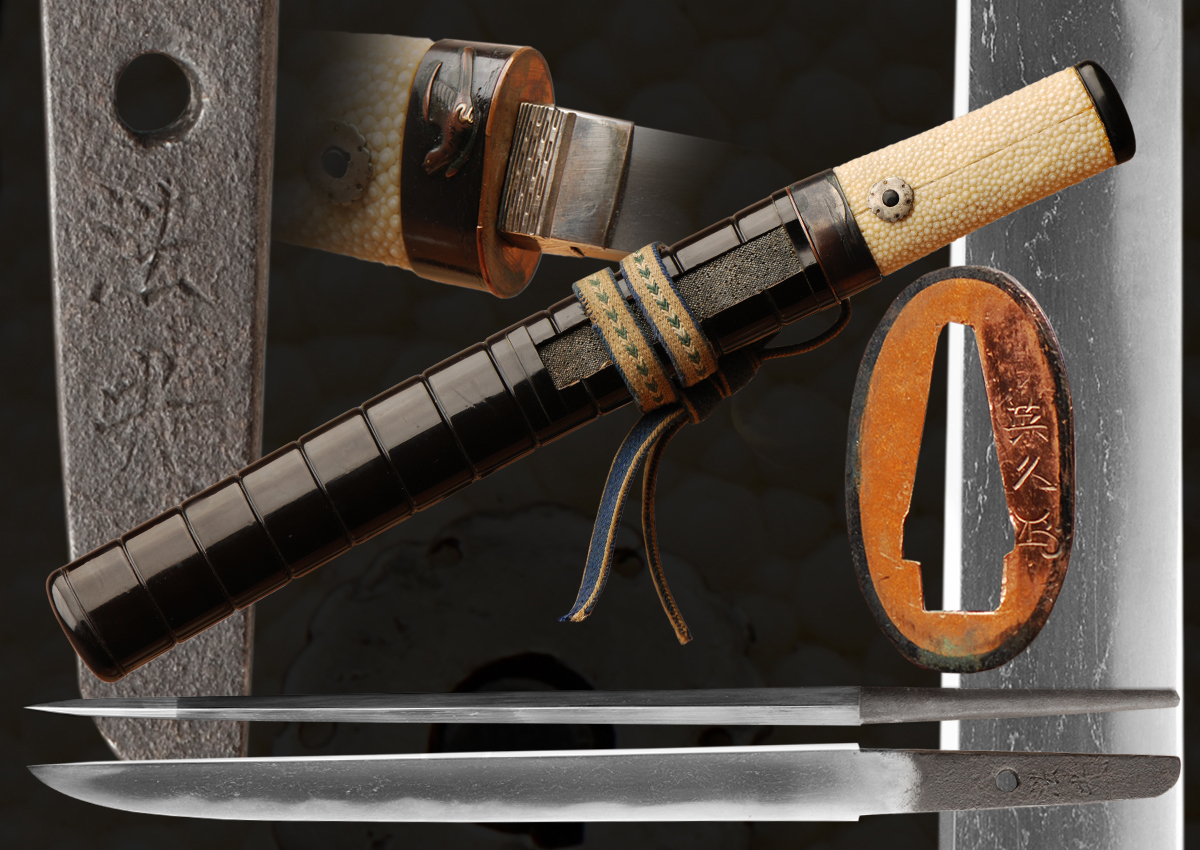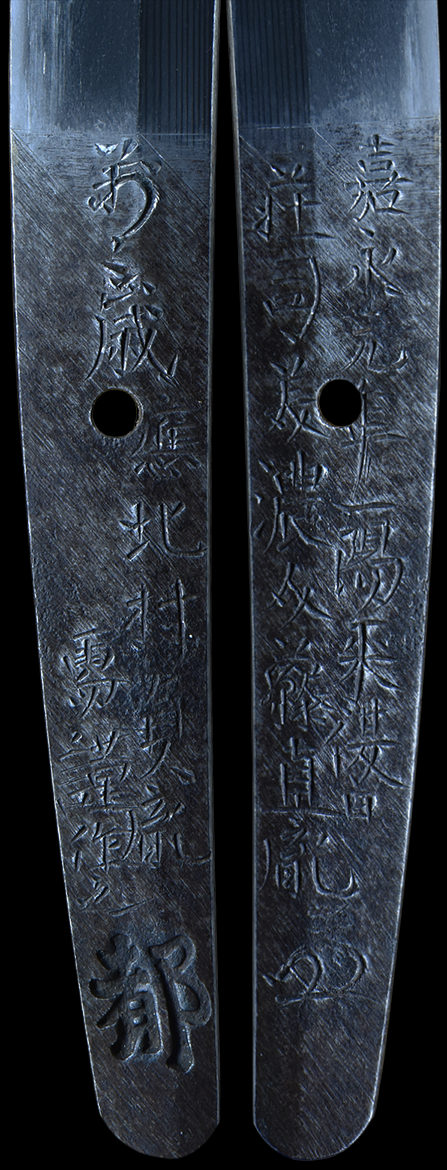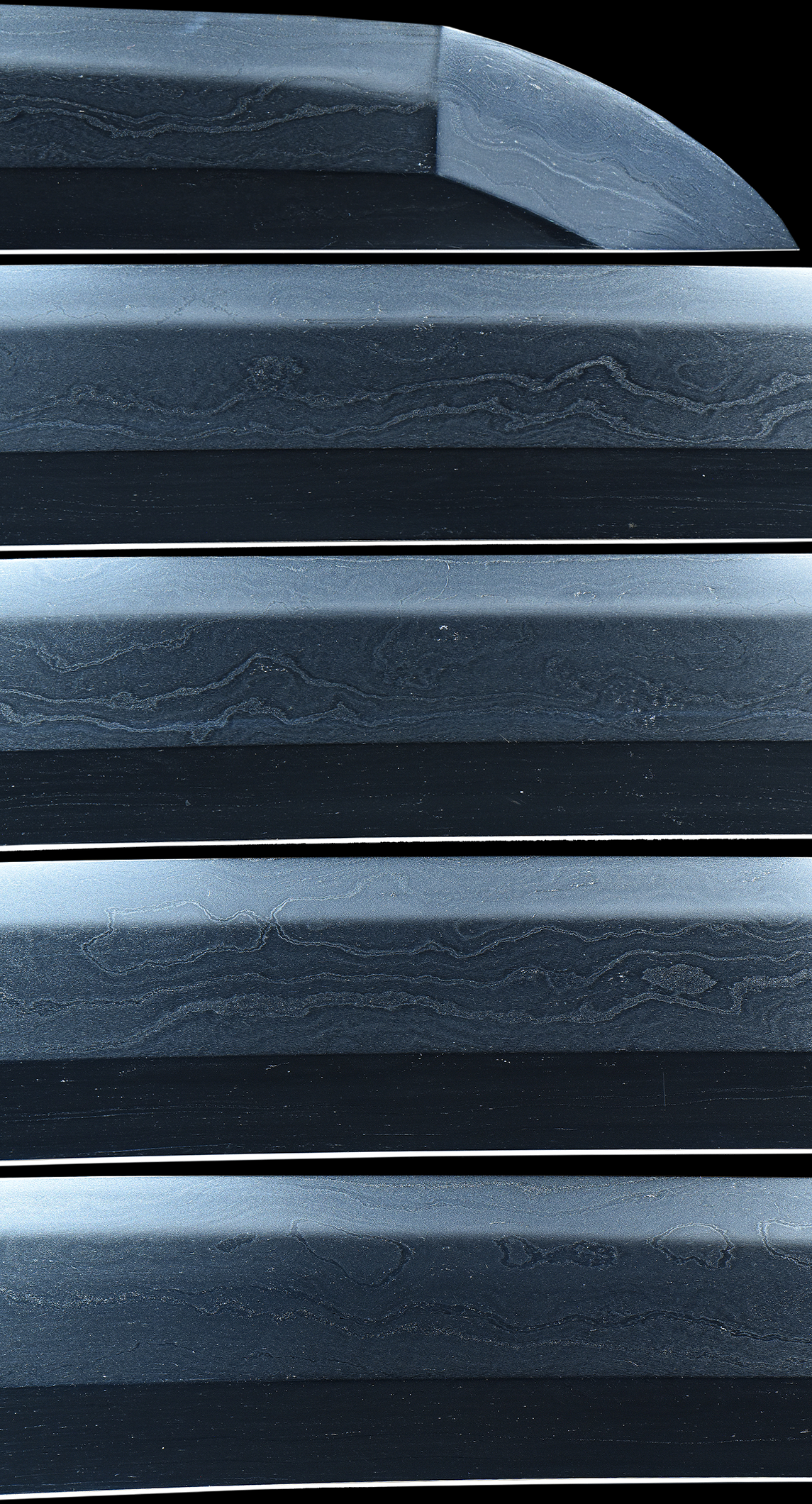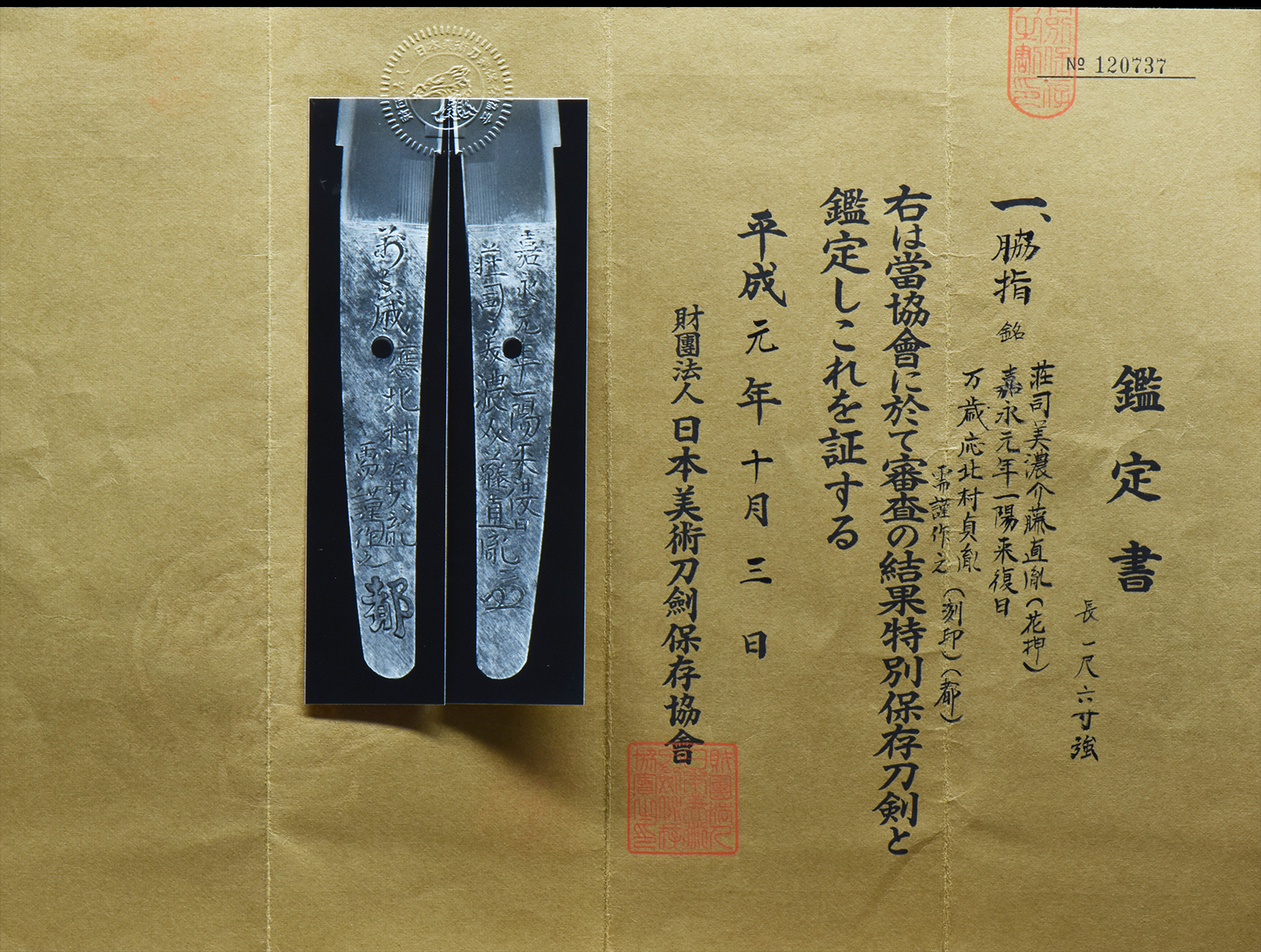Wakizashi by Harima no Kami Fujiwara Naotane (直胤)
Kaei 5 (1852), Edo Period
NBTHK Tokubetsu Hozon Tōken – Saijō Saku Rating
This magnificent wakizashi is signed Harima no Kami Fujiwara Naotane (播磨守藤原直胤) and dated Kaei 5 (1852). It has been authenticated with NBTHK Tokubetsu Hozon papers, confirming both its mei and workmanship. The blade is mounted in an elegant koshirae featuring a striking malachite saya with finely crafted shakudō fittings, making this a complete and highly desirable piece.
The Smith – Naotane (1778–1857)
Naotane is universally recognized as one of the greatest masters of the Shinshintō period and a direct disciple of Suishinshi Masahide, the father of the Shinshintō movement. Over a career spanning nearly eight decades, Naotane produced masterpieces across multiple traditions, excelling in Soshu, Bizen, and Yamato styles while retaining his distinct artistic identity.
He was awarded the court title Harima no Kami and is rated Saijō Saku (supreme master rank) in Fujishiro — the very highest level of swordsmithing achievement, reserved for the most extraordinary masters. His works are also ranked Ō-wazamono for cutting ability, ensuring their reputation not only as art swords but also as superior weapons.
Collectors prize Naotane for his extraordinary skill, his versatility, and the sheer beauty and vitality of his steel. His blades represent the pinnacle of late Edo craftsmanship, and his name carries prestige comparable to the greatest smiths of earlier eras.
The Blade
This wakizashi measures approximately 48.5 cm in nagasa, forged in shinogi-zukuri form with an iori-mune and ubu nakago that bears Naotane’s signature, date, and dedication inscription.
The hada is a refined itame mixed with flowing masame, covered in luminous ji-nie and highlighted with chikei. The hamon is a lively midare-ba, rooted in suguha but enhanced with gunome and executed in nie-deki. It is filled with dynamic hataraki including sunagashi, kinsuji, and areas of tobiyaki, reflecting Naotane’s mastery of the Soshu tradition. The boshi finishes in a bold hakikake, adding to the vigor and power of the sword.
Together, these features showcase the hallmark qualities that earned Naotane his Saijō Saku rating — meticulous precision, dynamic activity, and an artistic boldness that places his work among the greatest in Japanese sword history.
Koshirae
The blade is mounted in an elegant koshirae that elevates the presentation of the sword to the level of a fine art object.
-
Saya: Deep green malachite lacquer saya, rare and visually striking, adding elegance and luxury to the mountings.
-
Fittings: A suite of finely executed shakudō mounts, patinated to a rich dark tone, with tasteful carved details. The kojiri, fuchi, and koiguchi are reinforced and decorated in a consistent style.
-
Tsuba: An iron plate tsuba of bold form, harmonizing with the shakudō fittings.
-
Tsuka: Wrapped in cream ito over ray skin (same), fitted with menuki of fine workmanship.
The combination of malachite saya and shakudō fittings creates a rare and luxurious aesthetic, making this koshirae not only a functional mount but also an art piece in its own right.
- Mei: Soji Mino Suke Fuji Naotane (Kao)
Kai Gan Nen Ichiyoraifuku Bi
Banzai Ou Kitamura Sadatane Ju Kinsaku Kore (Kokuin)(To)
Translation: Naotane made this Wakazashi for Mr. Kitamura Sadatane in the winter solstice 1848 - Nagasa: 18.35 inches
- Sori: 1.2 cm
- Width at the ha-machi: 2.79 cm
- Width at the yokote: 1.95 cm
- Thickness at the mune-machi: 0.67 cm
- Construction: Shinogi zukuri
- Mune: Iori
- Nakago: Ubu
- Kitae: Itame/mokumewith clear spiral Jigane
- Hamon: Suguba with small Asbi, Sunagashi, and Kinsuji
- Boshi: Komaru followed with sweeping Kinsuji activity
- Condition: Good polish
(shipping and insurance included)
Email us if your interested in this item and remember to include the order number for this item: fss-660.
Click to Enlarge Image
Click to Enlarge Image
鑑定書 (Kanteisho – Appraisal Certificate)
No. 120737
Designation:
一脇指 (Ichi wakizashi) – One wakizashi
Nagasa (Length):
一尺六寸強 – approx. 48.5 cm
Attribution (Mei / Signature):
播磨守藤原直胤 (Harima no Kami Fujiwara Naotane)
嘉永五年 (Kaei 5, 1852)
「陽乗復日」 (Hi no tori fuku nichi – an auspicious phrase sometimes inscribed by Naotane)
万歳応声北村久兵衛 (Commissioned by Kitamura Kyūbei, inscribed on tang)
Description:
The above blade has been submitted to this society, examined, and authenticated as genuine. It has been designated Tokubetsu Hozon Tōken (Especially Worthy of Preservation Sword).
Date of Issue:
平成元年 (1989), October 3rd
Issuer:
財団法人日本美術刀剣保存協会 (Nihon Bijutsu Tōken Hozon Kyōkai – NBTHK)
Seals:
NBTHK authentication seals in red, including the embossed watermark/seal at top.
Click to Enlarge Image
For Sale

